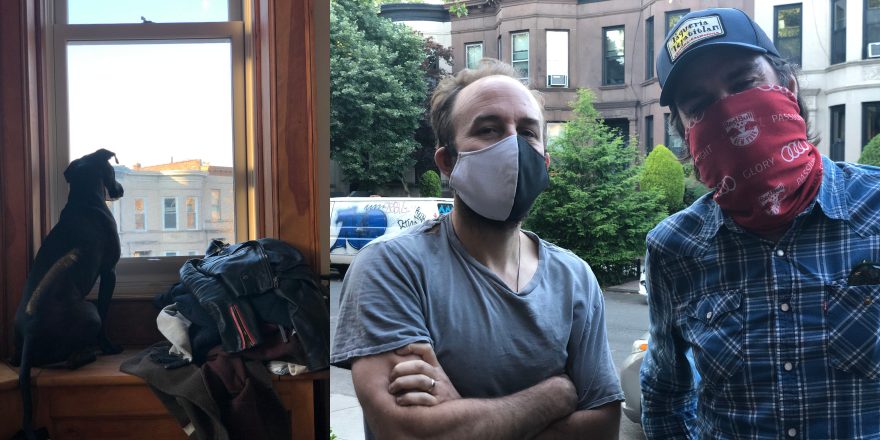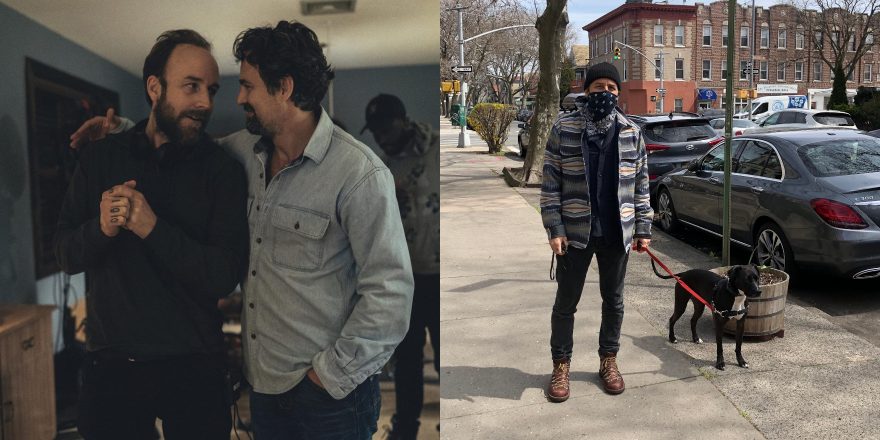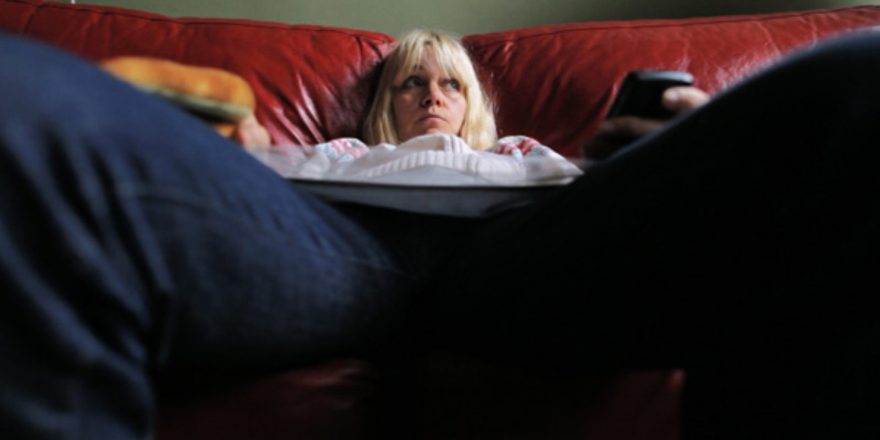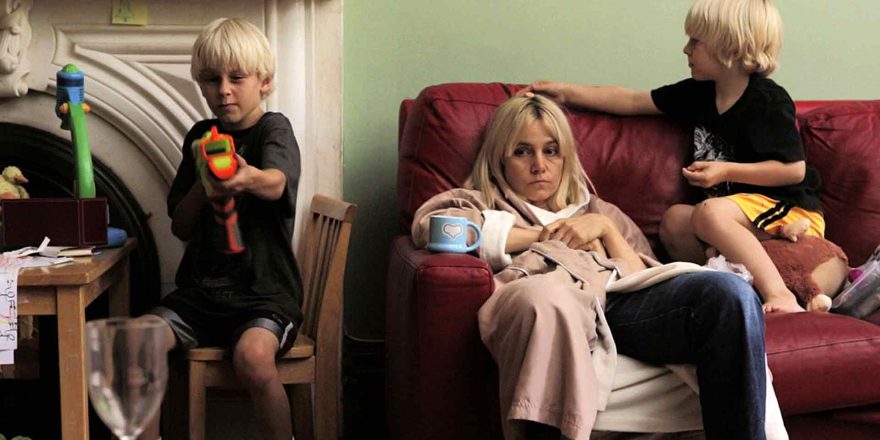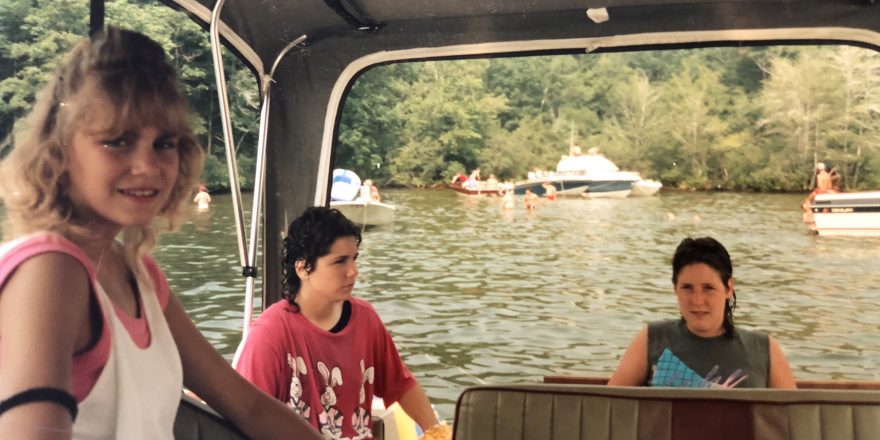Under normal circumstances, our TV screen was lit up once a week. On Fridays. Friday night was movie night. I live with two teenage boys, a husband and a dog. Sometimes the NFL was on, sometimes the NBA. There were no video games. Our home was a sanctuary from the chaos of the world, from the rat race, from overstimulation. It was a semi-peaceful and creative space where we sat at the end of the day to talk, eat, play music, write and draw, do homework. Sounds boring. It was supposed to be.
Then, the pandemic hit.
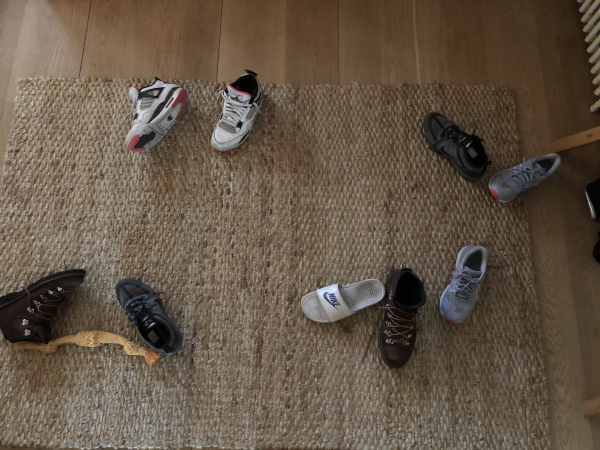
In March, when schools shut down, and Tiger King came out, many of us stopped running to meetings and carting kids to school. Parking in Brooklyn became nearly impossible. Every inch of space was taken up by the cars of every person working from home. The pandemic was upon us. Being in quarantine was isolation of mind, muscle and self. It started out like a snow day, but turned into the apocalypse. We thought of watching Contagion, but then thought not. I pushed the boys to get out and jog or walk. I tried to inspire them to play basketball with The Last Dance, a documentary about Michael Jordan, but they wanted nothing to do with it. The basketball courts soon closed anyway. The boys had their own ideas for entertainment. During the lockdown, my son smuggled an iPad into his bedroom. He played video games on the sly while the dog and I took our daily walk. When he got caught hiding the iPad under his mattress, he said the only time he could talk to his friends was when he played the game. I’d fought 16 years to keep the games out of the house. Now I was faced with the challenge to change my mind. These games, he said, were his only connection to other kids his age. It was understood that socialization is essential for development. There was no hanging out with friends during lockdown. With gritted teeth, we gave the boys the “OK” to enter the video game kingdom. It got really quiet in the house. Then, for the first time in months, since school closed, my son was laughing. Alone in his room, but connected online, he chattered and joked with his cousin and his friends. This was the sound of adolescence. Sounds that in normal times were the voices of boys becoming young men, shouting to each other on a basketball court; or the laughter watching a funny video as he and his classmates walked to the deli for chicken cutlets. Under the present circumstances, he was growing too. He was in his room yelling, “Fuck!” like he’d just discovered a new word. He was facing challenging situations and screaming, “I’m gonna die!” with excitement. This was what it was like to be himself and 13 in a world without adults in the room. Happy, loud and obnoxious, at times.
But, now, Pandora’s box open, the boys were gone. Their rooms were their teenage-driven spaceships, where they disappeared at light speed to galaxies our engines would never get to. They were on computers for school, devices for video games, computers for homework. Everything seemed unprecedented, and screen-orientated. The only thing normal going on was their need for independence and friends. If they couldn’t leave the house, they had to leave us somehow. The only time we’d see them was for their 10 meals a day. My husband has been trying to get a board game going since March. Puzzles of puppies and cows were outgrown and thrown away. Legos done. Nerf guns loaded but not fired anymore. Playing cards couldn’t compete with “weapons and skins and building” in a video game. We’d didn’t hear “I don’t know what to do.” Our house would never be boring again. They had video games now. No one appreciates boredom anymore.
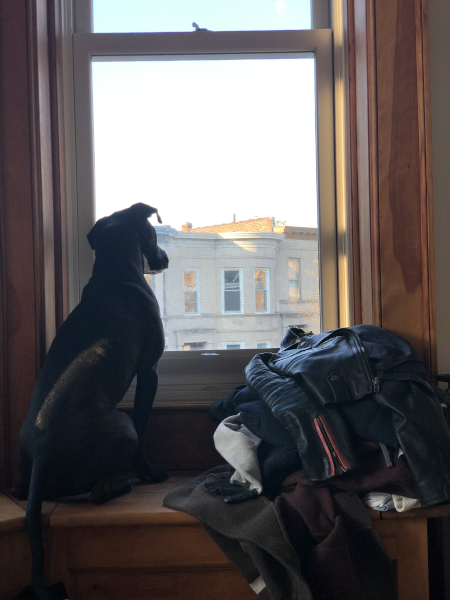
During the winter months, long, long ago, people were homebound. Storytellers roamed the land, making house visits. The storyteller would break up the monotony experienced by snowed-in villagers with a tale of goblins, morality and warriors. Families would sit by a fire with bear fur around their shoulders, the head of a wild boar over the mantle, and a shot gun on their laps. They were together, for an adventure of the imagination.
Maybe a story could lure our family out of their individual dens. In a house without so many readers, movies were our storytellers. Another screen lit up. This screen being one we could share.
For the first few weeks of quarantine, there were a lot of repeats. Marvel movies, again and again. Deadpool, Iron Man, Spider-Man, Ant-Man, X-Men. We watched Onward, the Pixar movie. And then silence. They wanted to know where the new superhero movies were. I suggested watching something different, that they hadn’t seen. I begged for an open mind. We spent hours on the flicker. We flicked through the channels, flicked through platforms, scrolled down the iTunes page, sped past scary images. Nothing was “new and noteworthy.” Production was on pause. So they started to watch the Avengers, again. I had to sneak away during the Marvel marathons. I just couldn’t sit through another two-and-a-half-hour movie, saving the same world over and over.
The “movie screen” became our together time. Sometimes all the family, sometimes me and my husband, but it was a central light beckoning us to it for comfort, adventure, excitement and community. I made popcorn, someone made butter, someone brought down the drink.
We had already watched all the Jackie Chan movies, so we tried Ip Man 1 through 4. We watched Drunken Master again. We watched Between Two Ferns: The Movie. Then The Hangover. We craved comedy. Recently I watched The Birdcage with my younger son. We rewatched The Heat and Spy. Watched The Boss again. One son gave in and finally watched Back to the Future. Tried E.T., but every time that finger came into the frame, my son covered his eyes and refused to watch anymore.

The world and its Brooklyn streets got quiet for some months. There was no traffic, no horns, no road rage. The air was sweet and clean. Mother Nature was chirping and smelling good. Oh my, how she can take off when humans aren’t messing things up. Nature in Brooklyn was getting wild. We had a possum making night visits in the neighborhood. Varieties of birds never seen before were in bushes on sidewalks. Flowers were brighter than ever. The trees seemed to smile over empty avenues, their branches perky with buds bursting at the tips. The blue sky was true blue. We watched Our Planet. And the making of Our Planet, behind the scenes. We walked through our neighborhood. We got to know the foreheads, torsos and legs of our neighbors. The purge of pollution from the air and earth was noticeable. We got passionate about preservation.
The spring of 2020 transformed into a season of adaptation. We were smelling flowers, but were soon asked to wear masks. We were getting food, but some were not. The recycling got picked up, but there were more homeless people collecting bottles than ever before. The quiet streets became eerie. We watched Collateral.
We were starting to process what was important in our lives, but only three months in, it wasn’t all that clear yet. People were leaving the city. Friends we’d had for years were making the migration to simpler places, less expensive living, and spacious yards. Many families were now together all the time. We had to learn how to grow as individuals in a space where we existed as a group. We had to remain true to ourselves, but understanding of the others. We watched A Hidden Life by Terrence Malick.
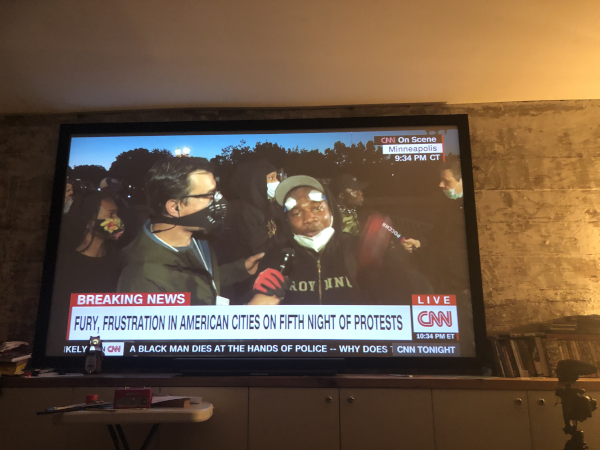
On May 25, George Floyd was murdered. The response was almost immediate. Millions of people witnessed the disregard for the Black body in an eight minute 43 second video. Did a captured audience help the movement? Was this an alarm for the sound asleep to wake up? Did individuals need a purpose during lockdown? Whatever it was, the attention given to the African-American experience was long overdue. People poured out of their apartments and let the world know “Black Lives Matter.” The protests began. It got loud, it grew, it got heard. Awareness of the inequality of Black lives became an expectation. Adjustments had to be made. There was a lot of encouragement to support black business owners, Black artists, Black filmmakers. Everywhere in the months that followed, booksellers, art galleries, museums and music venues were displaying the works of Black and Brown people on our devices and TV screens. Something that should have been integrated long ago. I noticed on the Criterion Channel, a new lineup of Black directors. I started to get familiar with Charles Burnett. I’d listened to him years ago in an NPR interview. Killer of Sheep was a classic to be seen by all aspiring filmmakers. I wondered, way back then, what had become of him. I watched To Sleep With Anger, My Cousin’s Wedding, A Walk with Charles Burnett. I felt fortunate to be invited into his world. And I couldn’t help but see my own family in the families he portrayed. Some things are so similar if we just have the chance to compare them. I watched Black Girl by Ousmane Sembène. This was a time to catch up.
Proms and graduations happened online. Funerals too. Summer entered the year with curfews and mandatory mask wearing. There would be no vacations. Halloween and Thanksgiving were cancelled. Zoom became the new means of contact. I still can’t light myself properly in a Zoom call. My dad is always just the top of his head. My son doesn’t put his face in the frame at all. Everyone in our house had excess energy. And no one wanted to be outside. Our family room became the gym. We exercised. All the time. And felt the pain every night.
My husband and I made a date to watch Bill Maher on Friday nights. We witnessed his transition from normalcy to quarantine; from talk show on stage to talk show at home. I loved seeing him do lo-fi shooting. No makeup, no hairdo, no special lighting. It was all getting so much more intimate. We met his dogs, saw the flaws in his self-grooming. It was apparent there were more important issues than haircuts and powdered noses. We saw inside the rooms of all his guests. We saw their backdrops of books and windows and families in picture frames. Without the fancy lights, clothes and makeup, it felt like the playing field was getting leveled. We were all bound by four sides of a screen, by zero knowledge of the future, by staying home. At last we had something in common. Though, still, there were those without a Zoom frame, those losing their homes.
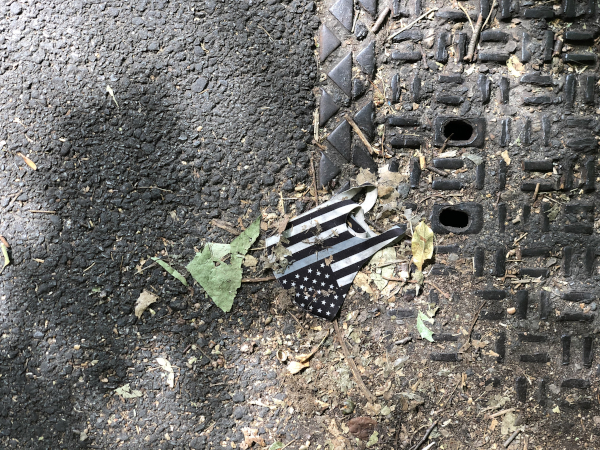
While the boys got more and more sucked into the vortex of video games, the TV screen was freed up. I snuck onto my couch and started watching. I needed “artsy” films. The Koker trilogy directed by Abbas Kiarostami, an Iranian filmmaker, was an experience of divine simplicity. I watched Black Narcissus and Kuroneko. I watched The Two of Us, a French film about a Jewish boy who is sent to live with an elderly catholic couple during the rise of the Nazi regime.
My mom had been telling me to watch The Witch. I said, “Mom, I can’t watch horror.” She said it wasn’t scary. I told her, “I can’t watch gore.” She said it wasn’t gory. I cursed her out when a baby gets eaten by the witch in the woods. And that’s just the beginning!
We spent many nights in outer space with our boys. We watched every Star Wars movie there is. We watched The Mandalorian. We came back to the realities of Earth and watched Borat. The boys left the room before it finished. We watched Django Unchained, Extraction with Chris Hemsworth, then The Host. When the boys disappeared, my husband and I watched Parasite, The Nest, The Vow, The Old Guard, Murder on Middle Beach, Crazy, Not Insane. My husband’s favorite is How To with John Wilson on HBO.
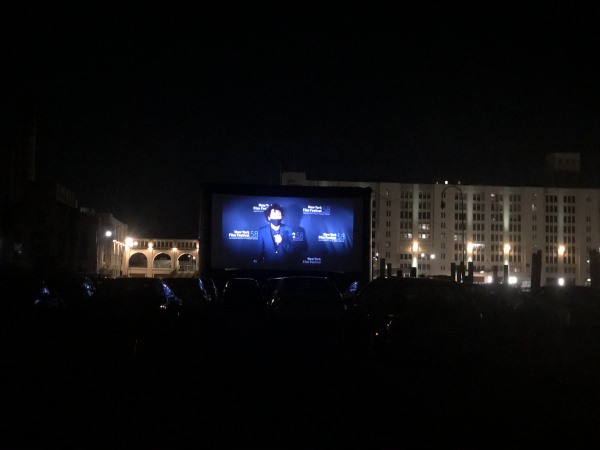
Over the span of this pandemic, four people close to me have finished their movies. Derek Cianfrance finished I Know This Much is True, Braden King The Evening Hour, Aza Jacobs French Exit and Darius Marder The Sound of Metal. Three premiered in my living room, in many people’s living rooms. Aza’s premiere was hosted by New York Film Festival and took place at a drive-in on a Brooklyn pier. There was still something to celebrate.
We stocked up on popcorn, we ordered CBD oil, we got our vitamin C and D and zinc, I got red wine. During this pandemic, I only have a few certainties. Contradictions happen. They have to happen in order for you to change your mind. I’m still not a fan of the addictive nature of video games, but in this pandemic they have been the only way to connect our kids with other kids and that’s been a good thing.
Most certain of all, I respect the Story. Whether it’s told around a fire under the tall oak trees, or around the kitchen table where a mom is telling her children how she embarrassed herself at McDonald’s when she walked out of the bathroom with toilet paper hanging to the floor from the backside of her pants, or if it’s a story told through a green man on the screen (“the Grinch found the strength of ten grinches, plus two”), stories bring us together. We’ve been watching a lot. Been together a lot. Been challenged a lot. But we’re also united a lot. I’ll probably miss the days we all spent together. It’s not easy growing up in a pandemic. For children, and for adults. Hopefully, the teens of the 2020 pandemic will have a story to tell. Long live the storyteller!
Featured image shows (left) Lucia looking out the window; and (right) Derek Cianfrance with Braden King. All images courtesy Shannon Plumb.



